Select Language
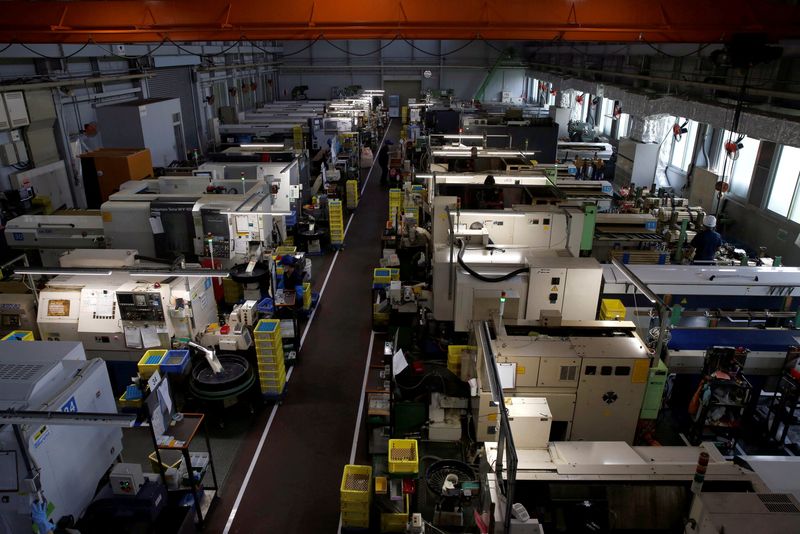
TOKYO (Reuters) -Japan’s manufacturing activity extended declines for nearly a year in May, as factories continued to take a hit from U.S. tariffs on Japanese goods, a business survey showed on Thursday.
While service-sector activity showed some resilience and stayed in expansionary territory, feeble manufacturing performance drove overall Japanese businesses back to contraction.
Japan’s trade envoy is set to have a third round of talks with U.S. officials this week, but it was unclear if there would be a deal to lower the tariffs set by President Donald Trump, which threaten the auto sector and other key industries.
The au Jibun Bank flash Japan manufacturing purchasing managers’ index (PMI) edged up to 49.0 in May from April’s final reading 48.7, but stayed below the 50.0 threshold that separates growth from contraction for the 11th month.
Factory output fell at a quicker pace than in April, while the decreases in new orders and new export business were slower than the previous month.
Cost pressures remained high but showed signs of easing. Input costs for factories rose at the slowest rate in 14 months, while output price inflation was down to the lowest in nearly four years.
Business confidence among manufacturers improved slightly in May after slipping to the weakest level in nearly five years in April. Meanwhile, service-sector managers’ sentiment hit the lowest since January 2021 during the COVID-19 pandemic.
"Uncertainty around the future trade environment and foreign demand" appear to cloud Japanese businesses’ outlook and output projections, said Annabel Fiddes, Economics Associate Director at S&P Global Market Intelligence, which compiled the survey.
The au Jibun Bank flash services PMI was down to 50.8 in May from 52.4 in April, with slower increases in new business, export business and employment.
Given the deterioration in both manufacturing and non-manufacturing activities, the au Jibun Bank flash Japan composite PMI fell to 49.8 in May from 51.2 in April.
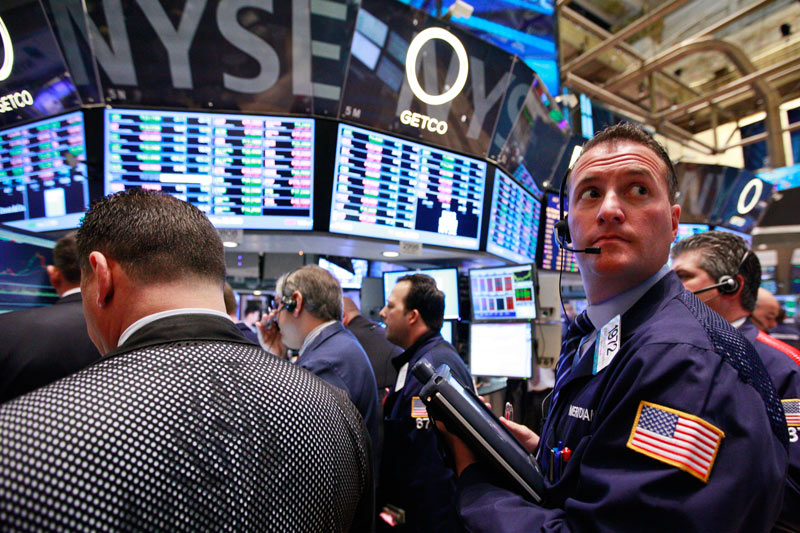
The S&P 500 closed sharply lower Wednesday as surging Treasury yields put the squeeze on stocks amid worries about the economy.
At 4:00 p.m. ET (20:00 GMT), the Dow Jones Industrial Average fell 817 points, or 1.9%, the S&P 500 index fell 1.6%, and the NASDAQ Composite fell 1.4%.
Treasury yields surge to pressure sentiment
Treasury yields rose sharply on concerns about economic growth, while a weak demand for the 20-year Treasury auction stoked fresh selling in U.S. sovereign bonds amid fresh signs that the recent knock to investor confidence in the U.S. amid policy uncertainty remain front and center.
Investors have remained on edge over the U.S. economy after Moody’s downgraded the U.S. credit rating last week, while Congress prepared to vote on a sweeping tax cut bill backed by President Donald Trump.
On the trade front, investors were holding out for more trade deals between the U.S. and major economies. A host of reports showed high-level talks with Japan are set to resume this week, while negotiations with several other countries are ongoing.
China added to the risk aversion by warning that the U.S.’ chip export controls threatened to undermine a trade truce reached in Geneva last week.
Alphabet jumps after product event
Alphabet (NASDAQ:GOOGL) jumped more than 2% on Wednesday, a day after the company unveiled a slew of new AI-related products and initiatives to ensure that it remains competitive in the AI race.
Microsoft Corporation (NASDAQ:MSFT), meanwhile, was trading below the flatline after announcing that 394,000 windows computers were infected by Lumma malware globally.
Trump’s tax bill in focus
President Donald Trump’s tax cut and spending bill has apparently run into opposition from several dissenting lawmakers, and faces a critical stress test on Wednesday as Republicans in the U.S. House of Representatives try to overcome internal divisions.
The bill, if approved, could add $3 trillion to $5 trillion to the country’s $36.2 trillion debt load, according to nonpartisan analysts, and comes after Moody’s downgraded its U.S. credit rating by a notch last week over growing national debt.
More retailer earnings in spotlight
Several major retailer stocks have reported earnings ahead of the open, as the first-quarter earnings season winds down.
Lowe’s (NYSE:LOW) stock fell after the home improvement chain reported net sales in the first quarter that were roughly in line with estimates, but flagged "near-term uncertainty".
Target (NYSE:TGT) stock fell after the big-box retailer slashed its annual sales forecast after posting a sharp decline in quarterly same-store sales, attributing the declines to weakened consumer confidence and a pullback in discretionary spending.
The figures come against a backdrop of increased tariff tensions that have contributed to gloomy returns and forecasts from a host of consumer-facing companies. This includes big-box retail titan Walmart (NYSE:WMT), which warned last week of impending price hikes.

Gold prices rose in Asian trade on Wednesday after a report that Israel was planning to attack Iran’s nuclear sites ramped up safe haven demand, while weakness in the dollar also helped.
Persistent concerns over U.S. fiscal health, plus uncertainty over trade negotiations also kept gold relatively well-bid, helping bullion recoup some of last week’s losses.
Spot gold rose 0.4% to $3,302.02 an ounce, while gold futures for June rose 0.6% to $3,303.62/oz by 00:57 ET (04:57 GMT).
Gold rises as Israel-Iran report boosts haven demand
Gold rose after CNN reported that Israel was preparing for a potential military strike on Iran’s nuclear facilities, citing U.S. officials familiar with recent intelligence.
While Israeli leaders were yet to make a final decision on the attack, military movements suggested that preparation for the attack were underway.
Any potential strike on Iran’s nuclear sites is likely to spark a severe deterioration in Middle Eastern geopolitics, and also goes against Washington’s desire for diplomacy with Tehran.
An Israeli strike is also likely to draw bitter retaliation from Iran, with the two countries having engaged in a series of strikes against each other last year.
The prospect of heightened instability in the Middle East boosted oil prices and sparked increased inflows for havens such as gold and the Japanese yen.
Other precious metals were mixed, but were sitting on some gains this week as they benefited from a softer dollar. Platinum futures fell 1% to $1,050.50/oz, while silver futures rose 0.2% to $33.255/oz.
Among industrial metals, benchmark copper futures on the London Metal Exchange rose 0.4% to $9,559.25 a ton, while U.S. copper futures rose 0.4% to $4.6928 a pound.
Softer dollar benefits gold, metal prices
Weakness in the dollar also benefited gold and the prices of other commodities priced in the greenback.
Recent weakness in the dollar came after Moody’s downgraded the U.S. sovereign credit rating by one notch, citing concerns over stretched fiscal spending and a growing debt pile.
Warnings from several Federal Reserve officials on increased economic and trade uncertainty also pressured the dollar, even as Fed officials said the central bank will not cut interest rates anytime soon.
Gold remained comfortably above the $3,000/oz level, and was less than $200 away from a record high hit earlier this month.
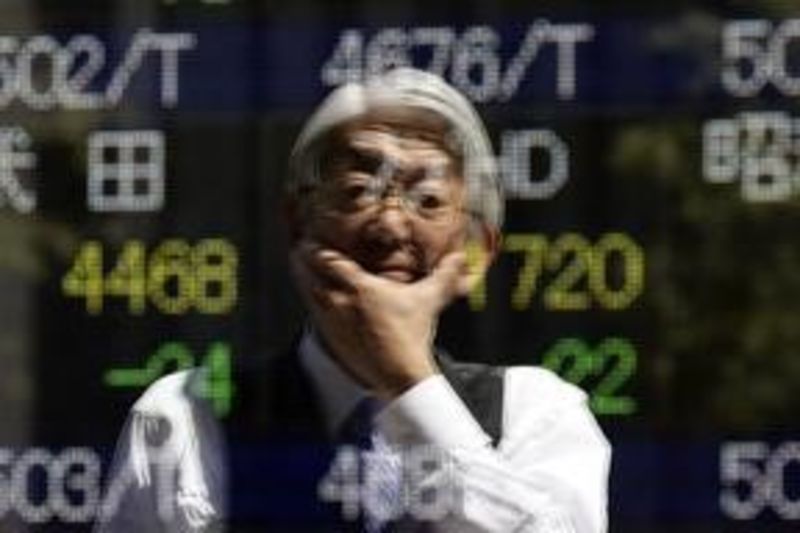
Most Asian stocks kept to a tight range on Wednesday, with Japanese shares retreating as soft trade data highlighted the impact of U.S. trade tariffs, while Australian stocks extended gains on a dovish RBA.
Regional markets took weak cues from a soft overnight finish on Wall Street, as the S&P 500 ran out of steam after a six-day run-up. S&P 500 Futures fell 0.2% in Asian trade.
Investors remained on edge over the U.S. economy after Moody’s downgraded its credit rating last week, while trade deals with Washington remained in focus.
A host of Federal Reserve officials warned that trade tariffs would underpin inflation and keep interest rates unchanged for longer.
Sentiment was also undermined by a report that Israel was planning to attack Iran’s nuclear facilities, a move that could drastically worsen geopolitical conditions in the Middle East.
Japan’s Nikkei dips as trade data shows tariff impact
Japan’s Nikkei 225 index fell 0.3%, while the TOPIX was flat after data showed the country logged an unexpected trade deficit in April.
The deficit was largely spurred by a drop in export growth, while imports were also more resilient than expected after a bumper springtime wage hike.
Wednesday’s data highlighted the impact of high U.S. tariffs on Japanese trade, and comes just days before Japan is reportedly set to begin a third round of high-level trade talks with Washington.
But Tokyo has so far shown little intent in shifting from its demand that all U.S. suspend all trade tariffs against the country.
Australia stocks soar on commodity gains, dovish RBA
Australia’s ASX 200 index rose 0.8% to a three-month high, extending gains from the prior session.
The ASX was boosted by gains in energy and gold stocks, as oil and bullion prices surged on a report that Israel was planning to attack Iran’s nuclear facilities.
Australian markets also remained heady after the Reserve Bank cut interest rates by 25 basis points on Tuesday, and flagged softer inflation and economic growth.
While the RBA did not commit to any further rate cuts, investors saw its outlook as largely dovish, which could herald more easing in the near-term.
China stocks rise, Beijing criticizes US chip controls
China’s Shanghai Shenzhen CSI 300 and Shanghai Composite indexes rose 0.6% and 0.3%, respectively, while Hong Kong’s Hang Seng index added 0.7%.
Chinese markets extended gains after the People’s Bank cut lending rates further this week, loosening monetary conditions and providing more support for the economy. The rate cut also showed Beijing remained committed to supporting growth, which could herald more stimulus measures.
But concerns over strained U.S.-China relations limited gains in stocks, after China’s commerce ministry issued a new statement criticizing U.S. restrictions on Chinese computing chips. Beijing flagged particular objections to the U.S. attempting to outlaw the use of Huawei chips outside China.
China had recently warned that the U.S. chip controls threatened to undermine a recent trade truce between the two countries.
Broader Asian markets were mixed. South Korea’s KOSPI added 1%, while Singapore’s Straits Times index shed 0.2%.
Gift Nifty 50 Futures for India’s Nifty 50 index pointed to a muted open, after the index tumbled from a seven-month high over the past three sessions.

TOKYO (Reuters) -Long-dated Japanese government bonds saw little relief on Wednesday after a poor auction result sent yields to record levels and as more debt sales loomed in the weeks ahead.
Super-long yields have been on the rise, following U.S. Treasury yields higher and as concerns swirled about how Japan’s government may fund new fiscal stimulus ahead of a upper house election slated for July.
The selloff in bonds is a quandary for the Bank of Japan, which is trying to taper its debt purchases and normalise monetary policy. Rising long-term borrowing costs is also a warning sign for the highly indebted Japanese government.
A lack of buyers at the Ministry of Finance’s sale of 20-year JGBs on Tuesday resulted in the worst auction result since 2012, according to analysts.
"For demand for super-long bonds to rebound, the market wants to get greater assurance that there will be a reduction of new bond issuance, which is technically possible within this fiscal year," said Naoya Hasegawa, chief bond strategist at Okasan Securities.
"Sentiment will be weighed down ahead of auctions for 30-year bonds next week, and 40-year bonds the week after."
The 20-year JGB yield was flat at 2.555%, after rising 15 basis points on Tuesday to the highest since October 2000.
The 30-year JGB yield fell 1.5 basis points to 3.110%, down from a record 3.14%. The 40-year yield was flat at 3.595% after touching an all-time peak of 3.6% on Tuesday.
Several political parties in Japan have been calling for consumption tax cuts, which Prime Minister Shigeru Ishiba has so far resisted. On Monday, he told parliament that Japan’s fiscal situation was worse than Greece’s at the height of the European debt crisis, according to local media reports.
An uptick in inflation portends less bond purchases by the BOJ, leaving the market vulnerable to the demand of more price-sensitive buyers, said Sally Auld, chief economist at NAB.
"It sort of feels a bit like the perfect storm for the JGB market at a time when generally investors seem to be a little bit more alert or a little bit more worried about the long-end of yield curves in general and rising term premiums," she said.
The benchmark 10-year JGB yield rose 1 basis point to 1.525%. The two-year JGB yield was flat at 0.725%, as was the five-year yield at 1.005%.
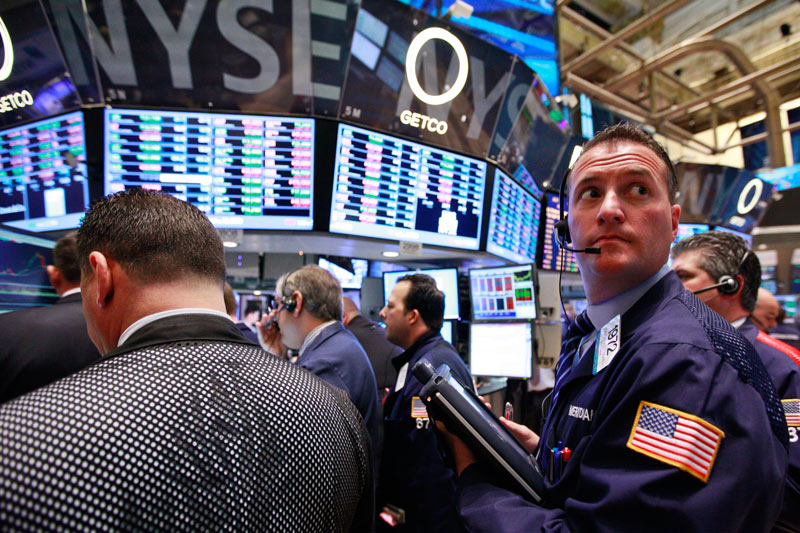
U.S. stock index futures fell slightly on Tuesday evening after the S&P 500 benchmark snapped a six-day winning streak amid persistent concerns over the U.S. economy and trade tariffs.
A report that Israel was planning to attack Iran’s nuclear facilities also dented risk appetite, while oil prices sprang up on the prospect of worsening Middle East conditions.
Comments from a slew of Federal Reserve officials also showed the central bank remained largely on edge over economic and trade-related uncertainty, which diminishes the chance of any interest rate cuts in the near-term. Fed officials also warned that high trade tariffs were likely to drive up U.S. inflation.
S&P 500 Futures fell 0.1% to 5,951.25 points, while Nasdaq 100 Futures fell 0.2% to 21,413.0 points by 19:28 ET (23:28 GMT). Dow Jones Futures fell 0.2% to 42,700.0 points.
S&P 500 snaps 6-day winning streak on trade, economic uncertainty
The S&P 500 fell for the first time after six sessions on Tuesday, pressured by a pullback in technology shares after recent gains.
Investors also remained on edge over the U.S. economy after Moody’s downgraded the U.S. credit rating last week, while Congress prepared to vote on a sweeping tax cut bill backed by President Donald Trump.
On the trade front, investors were holding out for more trade deals between the U.S. and major economies. A host of reports showed high-level talks with Japan are set to resume this week, while negotiations with several other countries are ongoing.
China added to the risk aversion by warning that the U.S.’ chip export controls threatened to undermine a trade truce reached in Geneva last week.
Losses in tech stocks weighed heavily on Wall Street, as the sector also saw some profit-taking this week. Nvidia’s unveiling of a host of new artificial intelligence technology inspired limited enthusiasm.
The S&P 500 fell 0.4% to 5,940.46 points on Tuesday, while the NASDAQ Composite fell 0.4% to 42,677.24 points. The Dow Jones Industrial Average fell 0.3% to 42,677.24 points.
More retailer earnings on tap
Several major retailer stocks are set to report earnings on Wednesday, as the first-quarter earnings season winds down.
Prints from Lowe’s (NYSE:LOW), Target, Canada Goose, and TJX (NYSE:TJX) are due before the market opens, while cloud company Snowflake (NYSE:SNOW) will report after the market closes. Investors are watching retail earnings for more insight into consumer spending, which was seen slowing in recent months due to pressure from trade tariffs.
Next week, AI darling Nvidia (NASDAQ:NVDA) is set to report its first quarter earnings.
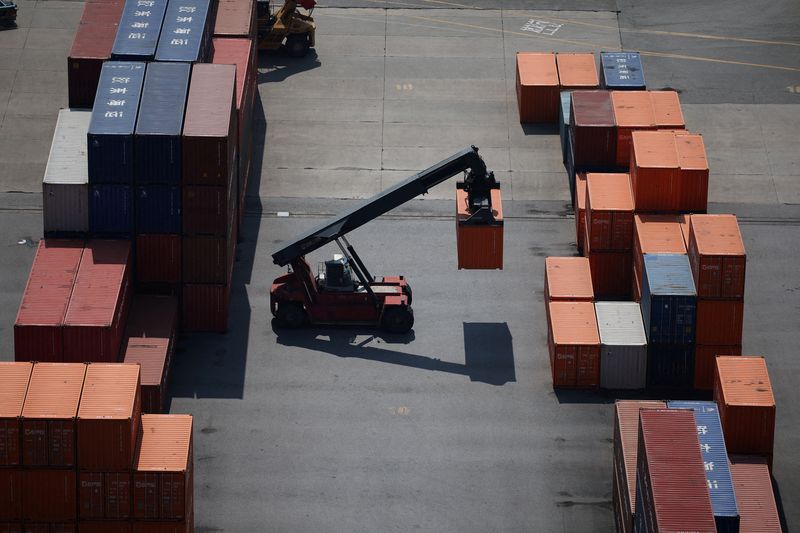
SEOUL (Reuters) -South Korea’s government pledged on Wednesday more support measures for key export industries, including the biopharmaceutical and auto sectors, which are expected to be hit by U.S. President Donald Trump’s sweeping tariffs.
The government will prepare new measures to support its biopharmaceutical companies, as soon as details of Trump’s tariffs on the sector become available, it said in a statement.
Earlier this month, Trump signed an executive order aimed at reducing the time it takes to approve pharmaceutical plants in the country. The move is part of new regulations to encourage domestic manufacturing, coming after Trump launched probes into pharmaceutical imports in order to put tariffs on the sector.
South Korea’s exports of pharmaceutical products stood at $9.59 billion in 2024, accounting for just 1.4% of its total exports. Still, 16% of the exports were shipped to the United States, the biggest market.
The government said it would also prepare additional support measures, if necessary, to complement earlier packages announced last month to help other sectors, such as automakers, chipmakers and steel manufacturers, to cope with tariffs.
After a second round of ministerial-level trade talks last week, Seoul is holding technical discussions with Washington this week at the working level, as it seeks exemptions on all tariffs by crafting a trade package by early July.
South Korea’s exports were unexpectedly resilient last month, buoyed by strong demand for semiconductors despite the drag from U.S. tariffs, but there are signs that global trade tensions have started to impact its key auto sector.

The Reserve Bank of Australia has reduced its policy rate by 25 basis points, bringing it to the lowest level in two years.
This move comes as inflation worries in Australia continue to diminish, providing the central bank with the opportunity to relax its monetary policy.
The benchmark rate has been cut to 3.85%, marking its lowest point since May 2023.
This decision aligns with the predictions of economists who had previously been surveyed.
This article was generated with the support of AI and reviewed by an editor. For more information see our T&C.
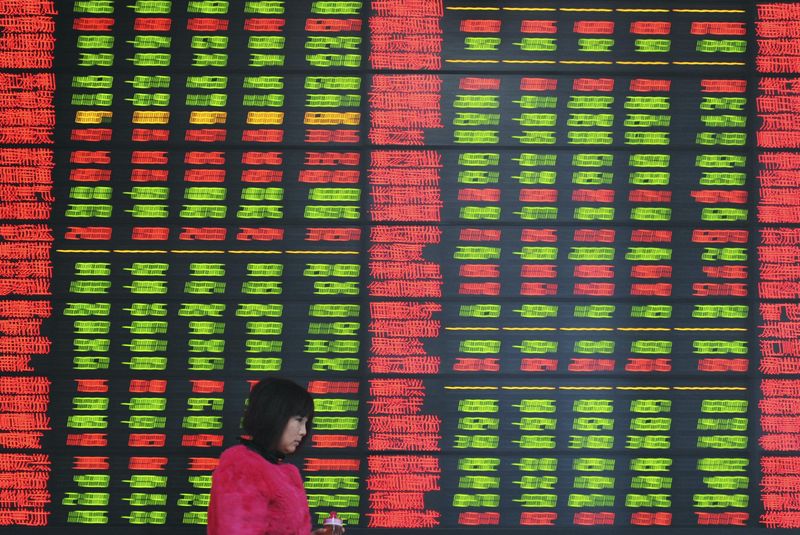
Most Asian stocks rose marginally on Tuesday, with China in the lead after Beijing cut a key lending rate as expected, while Australian shares firmed in anticipation of a widely expected rate cut by the RBA.
Regional markets took middling cues from Wall Street, which ended flat on Monday following a downgrade to the U.S. sovereign credit rating by Moody’s.
But S&P 500 Futures fell 0.2% in Asian trade, while gains in Chinese stocks were also limited after Beijing warned that U.S. controls on chip exports could undermine a trade truce reached last week.
Focus is now on a U.S. House of Representatives vote on a Trump-backed tax bill, as well as any more developments in U.S. trade talks.
Chinese stocks firm after loan prime rate cut; trade discourse in focus
China’s Shanghai Shenzhen CSI 300 and Shanghai Composite indexes rose about 0.3% and 0.2%, respectively, while Hong Kong’s Hang Seng index jumped 1%.
Gains in Chinese markets came after the People’s Bank of China cut its benchmark loan prime rate as expected, bringing the rate further into record low territory.
The cut signaled that Beijing was open to doling out more monetary stimulus to support the economy, although investors were still holding out for more fiscal measures, especially those aimed at boosting consumption.
But gains in Chinese markets were limited by a warning from Beijing that the U.S.’ strict curbs on chip exports to China threatened to undermine progress in a trade deescalation between the two countries.

BEIJING (Reuters) -China cut benchmark lending rates for the first time since October on Tuesday, while major state banks lowered borrowing costs as authorities work to ease monetary policy to help buffer the economy from the impact of the Sino-U.S. trade war.
The widely expected rate cuts are aimed at stimulating consumption and loan growth in a weakening economy while still protecting commercial lenders’ shrinking profit margins.
The People’s Bank of China said the one-year loan prime rate (LPR), a benchmark determined by banks, had been lowered by 10 basis points to 3.0%, while the five-year LPR was reduced by the same margin to 3.5%.
Most new and outstanding loans in China are based on the one-year LPR, while the five-year rate influences the pricing of mortgages.
The lending rate cut was announced just after five of China’s biggest state-owned banks said they have trimmed their deposit interest rates.
Industrial and Commercial Bank of China, Agricultural Bank of China (OTC:ACGBF), China Construction Bank (OTC:CICHF) and Bank of China reduced deposit rates by 5-25 basis points (bps) for some tenors, according to rates shown on the banks’ mobile apps.
The banks cut interest rates on time deposits by 5 bps to 0.05%, reduced rates on one-year time deposits by 15 bps to 0.95% and shaved off 25 bps on three-year and five-year time deposits.
These deposit rate reductions should guide smaller lenders in making similar cuts.
Reuters reported on Monday that China’s major state banks plan to cut their deposit rates from Tuesday, citing sources.
The rate cuts are part of a package of measures announced by PBOC Governor Pan Gongsheng and other financial regulators before talks between China and the U.S. in Geneva earlier this month that led to a de-escalation in their trade war.
Global investment banks are raising their forecasts for China’s economic growth this year, after Beijing and Washington agreed to a 90-day pause on tariffs, despite uncertainty around Sino-U.S. trade negotiations.
"We still believe it will be quite challenging for Beijing to achieve its ’around 5%’ growth target unless it rolls out a sizable stimulus package," Ting Lu, chief China economist at Nomura, said in a note this week. "Considering the respite on the trade war, Beijing might be under less pressure to introduce the necessary stimulus and reforms."
Recent economic readings show growth remains patchy and lacklustre.
China’s new home prices were unchanged in April from a month earlier, official data showed on Monday, extending the no-growth trend to nearly two years despite policymakers’ efforts to stabilise the sector. Meanwhile, new bank loans also tumbled more than expected last month.

